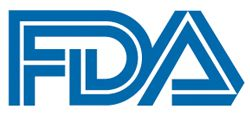Article
FDA Approves Naxitamab-gqgk for Relapsed/Refractory High-Risk Neuroblastoma
Author(s):
The FDA has approved naxitamab-gqgk (Danyelza) for use in combination with granulocyte-macrophage colony-stimulating factor as a treatment for pediatric patients 1 year of age and older and adult patients with relapsed/refractory high-risk neuroblastoma in the bone or bone marrow who have demonstrated a partial response, minor response, or stable disease to prior treatment.

The FDA has granted an accelerated approval to naxitamab-gqgk (Danyelza) for use in combination with granulocyte-macrophage colony-stimulating factor as a treatment for pediatric patients 1 year of age and older and adult patients with relapsed/refractory high-risk neuroblastoma in the bone or bone marrow who have demonstrated a partial response, minor response, or stable disease to prior treatment.1
The decision is supported by clinical evidence from 2 studies in patients with high-risk neuroblastoma with refractory/relapsed disease.
“Today is an important day for children living with refractory/relapsed high-risk neuroblastoma,” said Thomas Gad, founder, chairman and president, of Y-mAbs, the developer of naxitamab. “It’s very exciting to see this treatment go from being an experimental therapy used at my daughter’s bedside to now being FDA approved. On behalf of Y-mAbs, I want to thank all the patients and physicians who took part in our clinical trials and our scientific partner, Memorial Sloan Kettering, for helping us achieve this goal.”
Naxitamab is a GD2-directed monoclonal antibody, which is highly expressed in various neuroectoderm-derived tumors and sarcomas. Naxitamab is administered to patients 3 times per week in an outpatient setting and is repeated every 4 weeks.
Initial results from the Study 12-230 trial (NCT01757626) had been presented at the 2019 International Society of Pediatric Oncology Annual Congress.2 At the meeting, data from several subsets of patients who received the agent were released.
In 28 patients with primary refractory high-risk neuroblastoma, the ORR as 78% and the 2-year PFS rate was 50%. In a subset of 35 patients with relapsed neuroblastoma resistant to salvage therapy, the ORR was 37% and the 2-year PFS rate was 36%. In 44 patients with high-risk neuroblastoma in second or later complete remission and no evidence of disease, naxitamab was given in combination with GM-CSF as maintenance therapy; this resulted in a 2-year PFS rate of 52%.
Findings from a trial (NCT03363373) detailed in a poster presentation that had recently been presented at the 2020 ASCO Virtual Meeting showed that treatment with the agent in 24 patients with relapsed/refractory high-risk neuroblastoma led to a high complete response (CR) rate of 71% (95% CI, 49%-87%) and an overall objective response rate (ORR) of 79 (95% CI, 58%-93%).3
Of 16 patients who were primary refractory, the ORR with naxitamab was 88% (95% CI, 62%-98%) and the CR rate was 81% (95% CI, 54%-96%). Of 8 patients who had an incomplete response to salvage treatment, the ORR and CR rates were 63% (95% CI, 24%-91%) and 50% (95% CI, 16%-84%), respectively. Thirteen of 14 patients who had bone marrow disease at baseline experienced bone marrow clearance.
The median progression-free survival (PFS) was 42 weeks (95% CI, 26—not estimable), and the median follow-up time in patients evaluable for efficacy was 30 weeks.
With regard to safety, 88% of patients experienced at least 1 related treatment-emergent adverse event (TEAE) that was grade 3/4 in severity; these events included general disorders and administration site conditions (72%), pain (72%), vascular disorders (60%), hypotension (60%), respiratory, thoracic, and mediastinal disorders (44%), skin and subcutaneous tissue disorders (40%), and urticaria (40%), among others.
Six serious related TEAEs were reported in 5 patients: anaphylactic reaction (n = 4), pyrexia (n = 1), and respiratory depression (n = 1).
The accelerated approval is contingent on the results of the confirmatory, ongoing Study 201 trial. The study will enroll a minimum of 80 patients.
Reference
- FDA Approves Y-mAbs’ DANYELZA® (naxitamab-gqgk) for the Treatment of Neuroblastoma. News release. Y-mAbs. November 25, 2020. Accessed November 25, 2020. https://bit.ly/3nVyHGl.
- Y-mAbs announces naxitamab update. News release. Y-mAbs Therapeutics, Inc. October 25, 2019. Accessed June 2, 2020. bit.ly/2XrflyG.
- Mora J, Chan GC-F, Morgenstern DA, et al. Naxitamab, a new generation anti-GD2 monoclonal antibody (mAb) for treatment of relapsed/refractory high-risk neuroblastoma (HR-NB). J Clin Oncol. 2020;38(suppl 15):10543. doi:10.1200/JCO.2020.38.15_suppl.1054.









